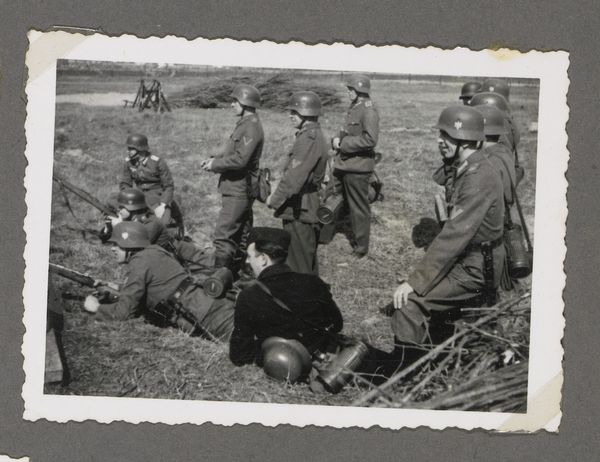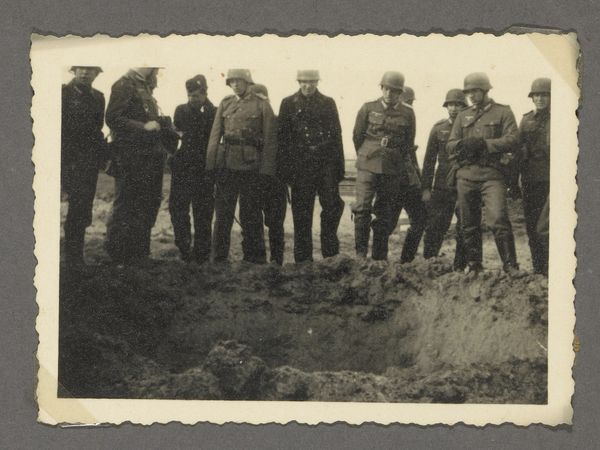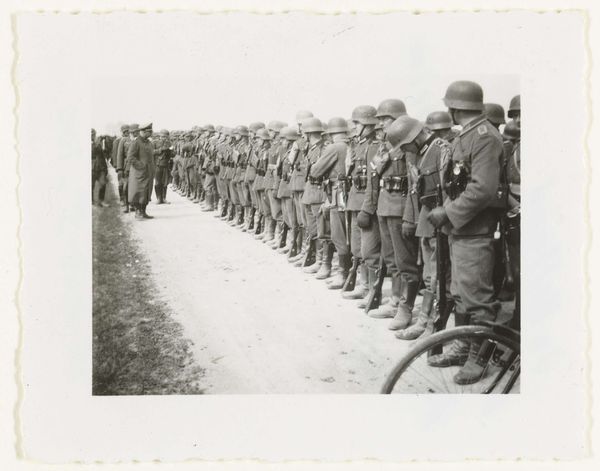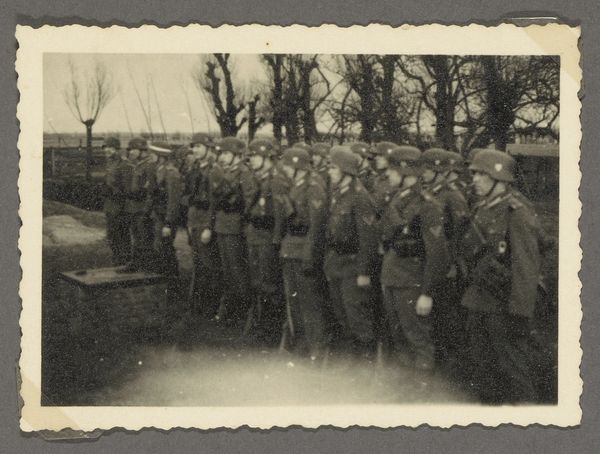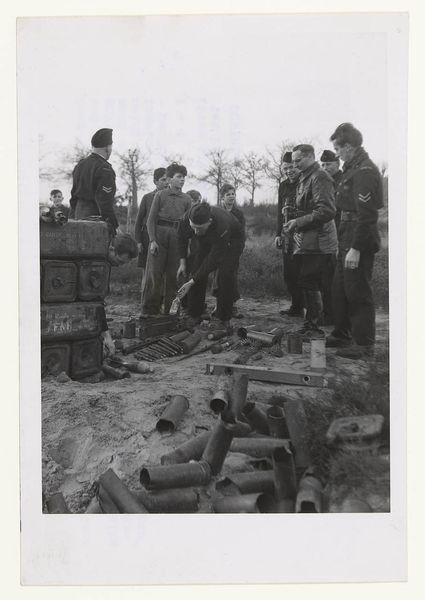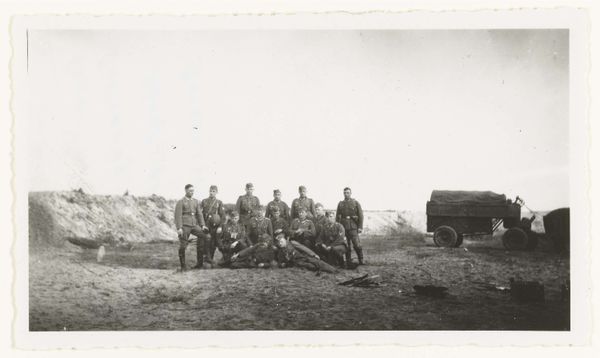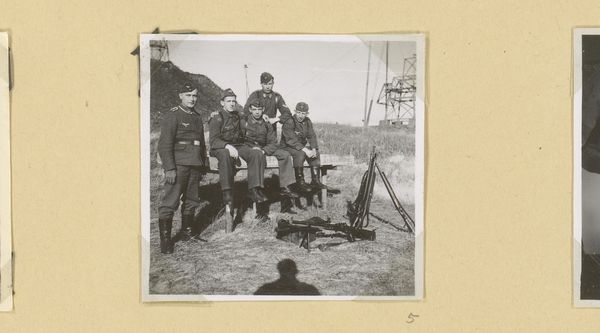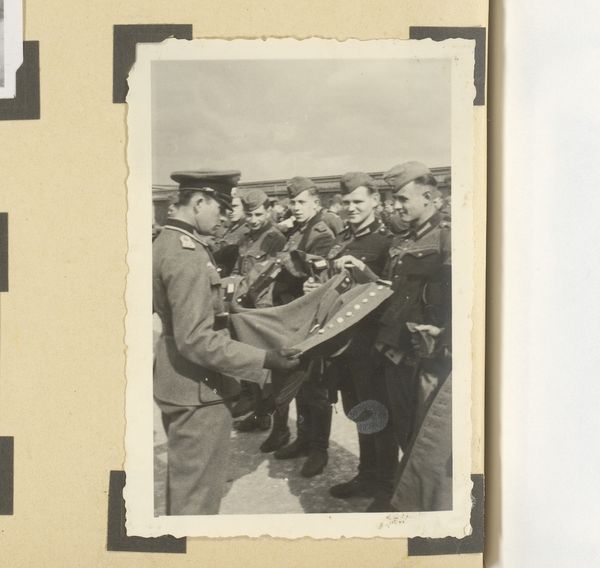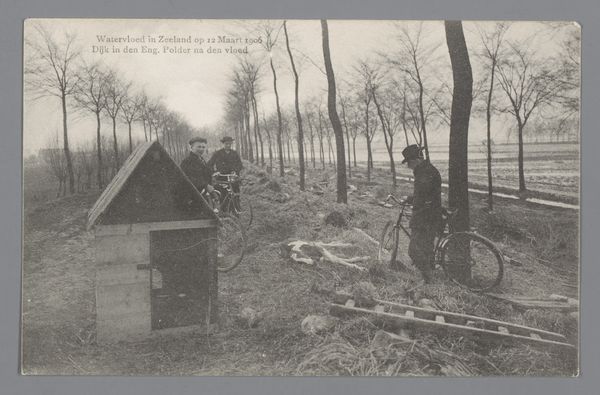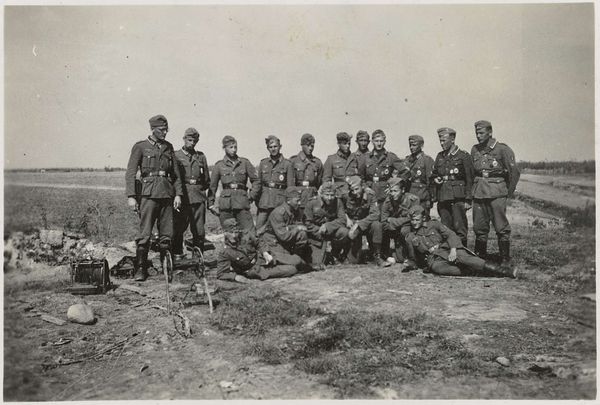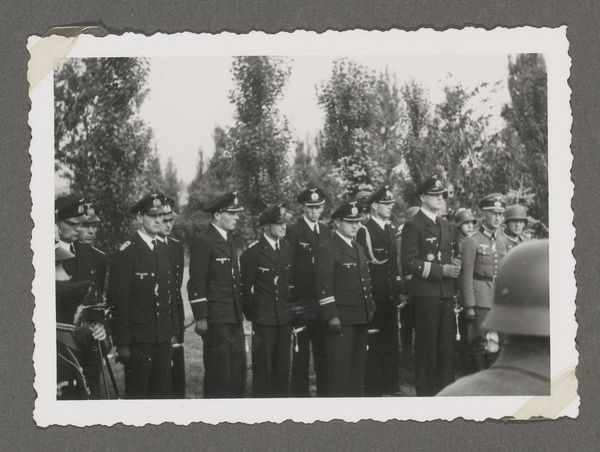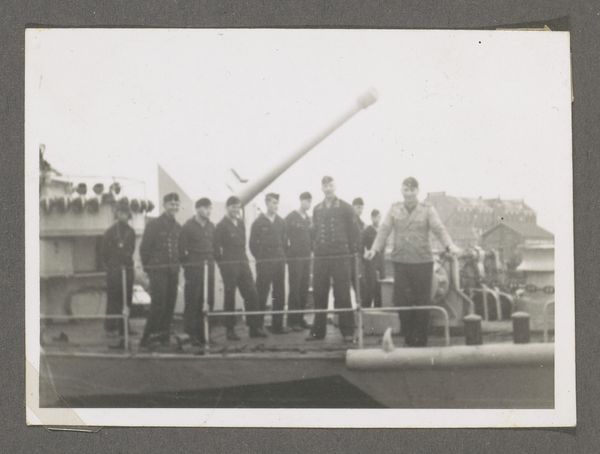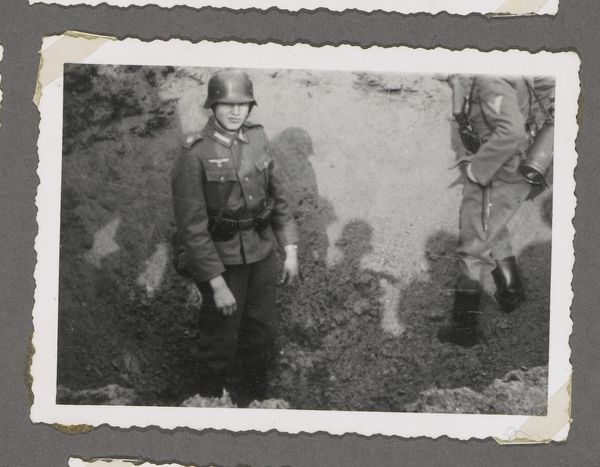
photography, gelatin-silver-print
#
portrait
#
photography
#
gelatin-silver-print
#
history-painting
#
realism
#
monochrome
Dimensions: height 67 mm, width 88 mm
Copyright: Rijks Museum: Open Domain
Editor: This gelatin silver print, titled "Militairen tijdens een schietoefening te Vlaardingen," comes from somewhere between 1935 and 1945. There's a stark realism to it; it feels immediate and candid. What stands out to you when you look at this? Curator: What strikes me is how the photograph serves as a document of labor, even within the context of military training. The raw materials of war—the wood planks used as makeshift platforms, the rifles themselves, the gelatin silver used for the print—speak volumes. Who produced this print and for what purpose? These considerations undermine notions of singular authorship. Editor: That's interesting – it's easy to miss the actual labor involved in military preparation. I was so focused on the subject. It's also quite powerful to think about the image itself as a material object connected to a broader socio-political landscape. Curator: Exactly. Consider the role of photography during this period. It was instrumental in shaping public perception of the military, of war. The use of gelatin silver prints speaks to mass production, dissemination, and a very specific kind of visual consumption. Who was meant to view this? And what narratives were being constructed through images like these? Editor: It prompts you to consider what processes went into even something that appears so…off-the-cuff, you know? Is it possible to view such a clearly documentary-style photograph as a crafted art piece too? Curator: Absolutely. By scrutinizing the materiality – the photographic process, the paper, the ink – and the context of production and consumption, we dismantle the artificial boundaries between art, craft, and document. The image, in its very physicality, embodies a history of labour, ideology, and power. Editor: I never really thought about documentary photography this way – it gives a lot more food for thought when analyzing such pieces. Thanks for the different perspective. Curator: Precisely, examining these elements grants us insights beyond the depicted scene, bridging materiality, context, and meaning in compelling ways.
Comments
No comments
Be the first to comment and join the conversation on the ultimate creative platform.
